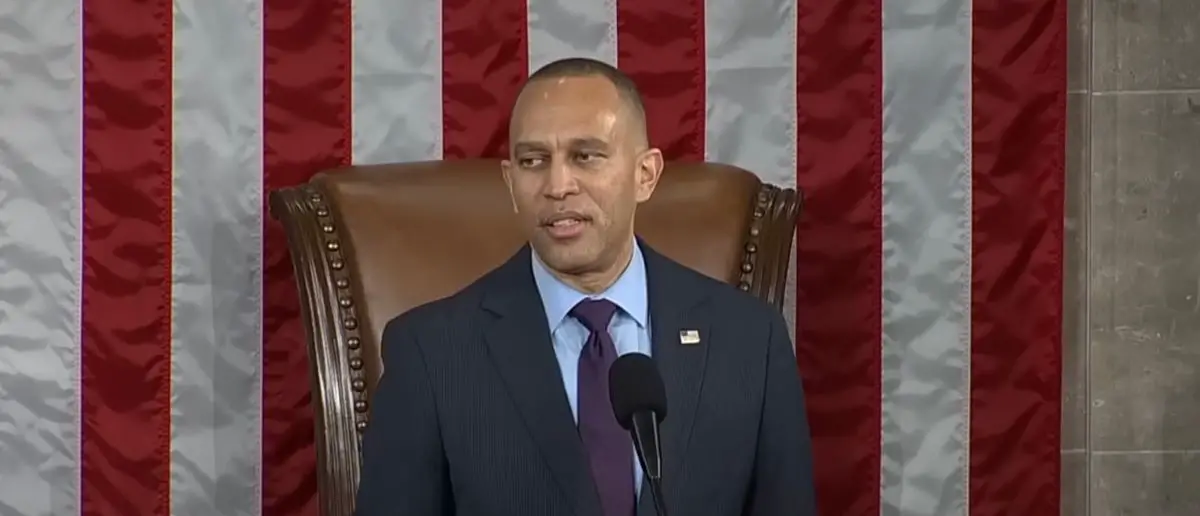
The Trump admin critics are stunned. They’ve been wrong every step of the way.
And Trump’s haters have egg on their faces after Donald Trump secured this huge win.
Trump Administration Announces New Trade Agreement with South Korea
On Wednesday evening, President Donald Trump revealed that the United States has finalized a comprehensive trade agreement with South Korea, shortly after discussions with officials regarding a proposal to reduce import tariffs. This development follows closely on the heels of a significant trade pact with the European Union, which reduced tariffs to 15% in return for investments in American energy and other sectors.
The agreement with South Korea mirrors the EU deal by lowering the tariff rate on South Korean imports from 25% to 15% and includes commitments for investment in U.S. energy. “The deal is that South Korea will give the United States $350 Billion Dollars for Investments owned and controlled by the United States, and selected by myself, as President,” Trump posted on Truth Social. “Additionally, South Korea will purchase $100 Billion Dollars of LNG, or other Energy products and, further, South Korea has agreed to invest a large sum of money for their Investment purposes.”
The trade deal is set to be formalized during a visit by South Korean President Lee Jae Myung to the White House within the next two weeks. “It is also agreed that South Korea will be completely OPEN TO TRADE with the United States, and that they will accept American products including Cars and Trucks, Agriculture, etc,” Trump stated. “We have agreed to a Tariff for South Korea of 15%. America will not be charged a tariff.”
Earlier on Wednesday, Trump hinted that other countries have also proposed deals to lower tariff rates. He emphasized that these agreements aim to significantly reduce the U.S. trade deficit. “All of this will help reduce our Trade Deficit in a very major way. A full report will be released at the appropriate time. Thank you for your attention to this matter. MAKE AMERICA GREAT AGAIN!” he concluded.
🚨BREAKING
TRUMP REVEALS THERE IS NO DEAL WITH CANADA AHEAD OF AUG. 1ST DEADLINE
"I think Canada will be one that just pays the tariffs"
"when that letter goes out, they just pay. That's the deal. pic.twitter.com/ncKTM1cog0
— Tablesalt 🇨🇦 (@Tablesalt13) July 25, 2025
Trump Administration’s Push for Fairer Trade Deals to Boost U.S. Economy
The Trump administration has made trade policy a cornerstone of its economic strategy, focusing on renegotiating agreements to secure more favorable terms for the United States. The recent trade deal with South Korea exemplifies this approach, aiming to reduce the U.S. trade deficit while promoting domestic industries. By lowering tariffs on South Korean imports from 25% to 15%, the deal encourages reciprocal trade, ensuring American products like cars, trucks, and agricultural goods gain better access to South Korean markets.
This agreement follows a similar pact with the European Union, where tariff reductions were exchanged for investments in U.S. energy and goods. The administration’s strategy hinges on leveraging tariff adjustments to incentivize foreign investment in critical sectors like energy, manufacturing, and agriculture. These sectors are vital for job creation and economic growth, particularly in regions dependent on industrial and agricultural output.
South Korea’s commitment to invest $350 billion in U.S.-controlled ventures and purchase $100 billion in liquefied natural gas (LNG) or other energy products underscores the administration’s focus on energy exports. The U.S. has become a leading LNG exporter in recent years, and such deals strengthen its position in global energy markets while reducing reliance on foreign energy sources.
The absence of tariffs on American exports to South Korea under the new deal is a significant win for U.S. businesses. By eliminating these barriers, the agreement levels the playing field, allowing American companies to compete more effectively in South Korea’s market. This is particularly impactful for the automotive and agricultural sectors, which have faced challenges penetrating certain international markets due to high tariffs and regulatory hurdles.
The administration’s trade negotiations extend beyond South Korea and the EU. Reports indicate that other nations are engaging with the U.S. to secure similar tariff reductions. These efforts aim to address longstanding trade imbalances, particularly with countries running significant surpluses with the U.S., such as China and Japan.
Economists have mixed views on the administration’s tariff-focused strategy. Proponents argue that reducing trade deficits through bilateral agreements stimulates domestic industries and protects American workers. Critics, however, caution that tariff reductions must be carefully managed to avoid unintended consequences, such as increased consumer prices or retaliatory measures from trading partners. The South Korea deal, with its emphasis on mutual tariff reductions, appears designed to mitigate such risks.
The administration’s trade policies also reflect a response to global economic trends. As countries like China expand their influence through trade and investment, the U.S. seeks to counterbalance this by securing favorable deals with key allies like South Korea and the EU. These agreements not only boost economic ties but also strengthen geopolitical alliances, creating a network of partners aligned with U.S. interests.
Energy exports, a focal point of the South Korea deal, are a critical component of the administration’s economic vision. By securing large-scale purchases of LNG, the U.S. can capitalize on its abundant natural gas resources, supporting jobs in energy-producing states like Texas and Louisiana. This also aligns with efforts to diversify global energy supplies, reducing dependence on less stable suppliers.
The impact of these trade deals on the U.S. economy will depend on their implementation and the response from trading partners. The administration has promised a detailed report on the outcomes, which will likely provide insights into the scale of investments and job creation expected from these agreements. For now, the deals signal a proactive approach to addressing trade imbalances and promoting American industries.
The focus on fair trade is also a political strategy, resonating with voters concerned about job losses due to globalization. By prioritizing industries like manufacturing and agriculture, the administration aims to deliver tangible economic benefits to its base, particularly in swing states with strong industrial and farming communities. The South Korea deal’s emphasis on cars and agricultural products directly addresses these constituencies.
Stay tuned to the DC Daily Journal.





